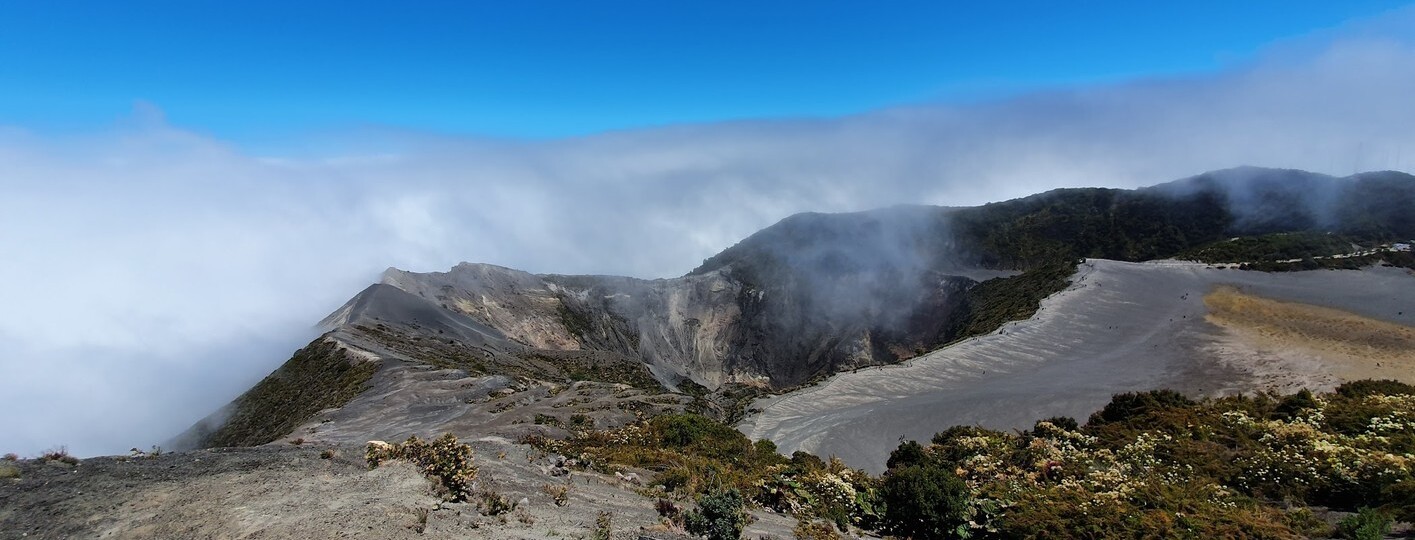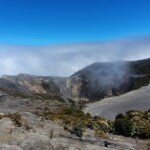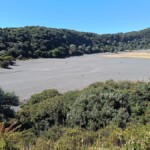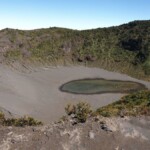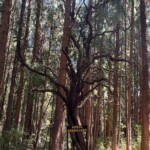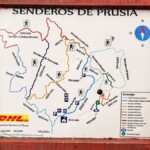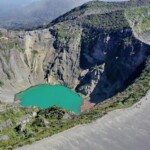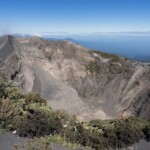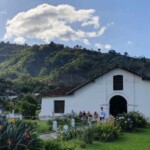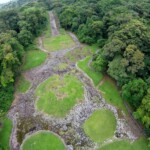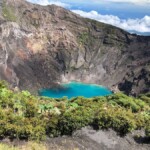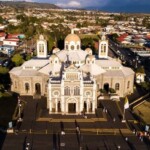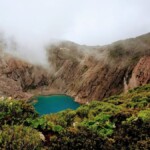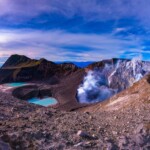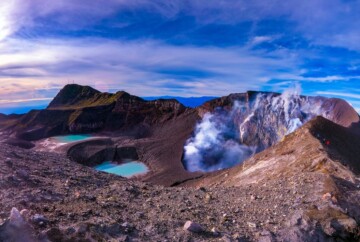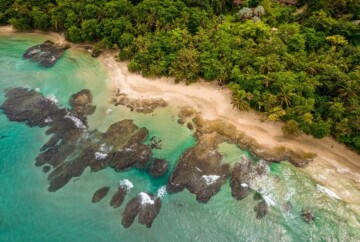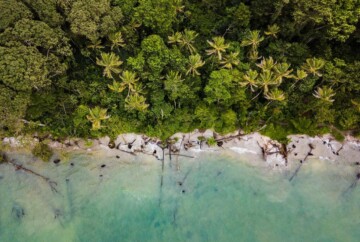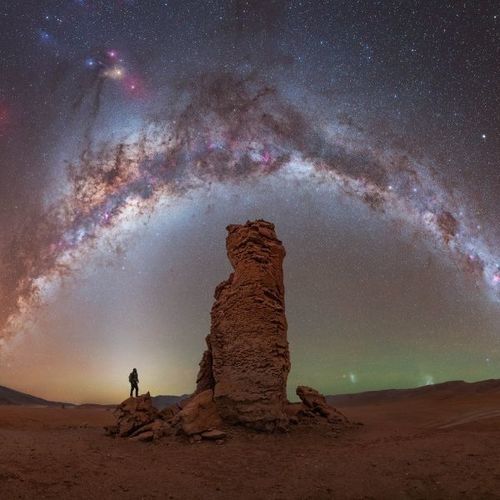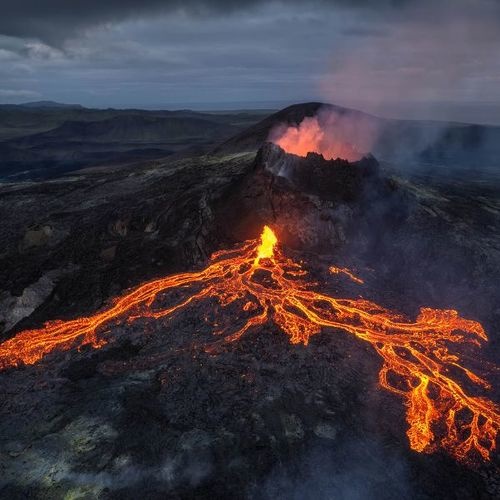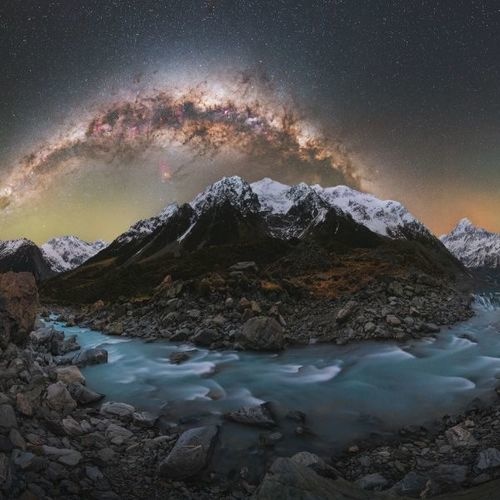Irazú Volcano, standing tall at 11,260 feet, is the highest active volcano in Costa Rica. At first glance, it might seem dormant, but the fumaroles rising from its surface are a clear reminder of its activity. It’s no wonder that this is one of the most visited national parks in Costa Rica.
For starters, its location is a huge advantage. Being just a two-hour drive from San José, the capital of Costa Rica, it’s perfect for a day trip. Plus, its accessibility makes it a great spot for families to visit.
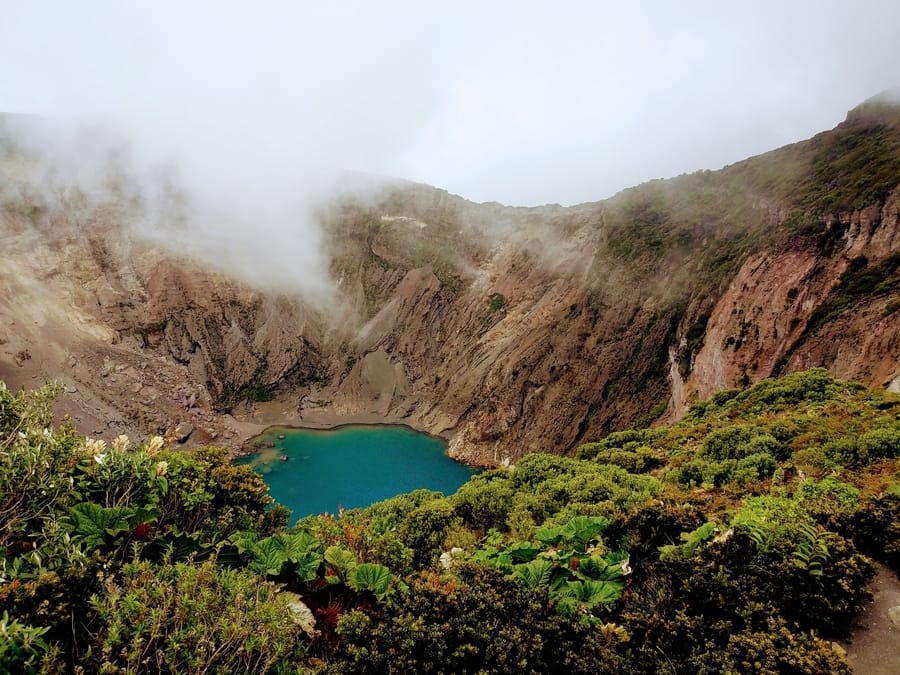
Guide to Irazu Volcano National Park in Costa Rica
I’ll admit I was hesitant to include it in my itinerary at first. It’s such a popular destination, and I thought it might feel overly touristy. But once I saw the breathtaking turquoise lake that forms in one of its craters during the rainy season, I understood why everyone flocks here. And let me tell you, standing at the summit on a clear day, with views of both the Atlantic and Pacific Oceans, is an experience I’ll never forget.
We rented a car since we wanted to explore more remote attractions in Costa Rica, but if you’d rather not drive, you can take this tour and enjoy a day trip to Irazú Volcano from San José. The tour not only covers the volcano but also includes other fascinating stops that let you dive deeper into the surrounding area.
In this guide, I’ll share everything you need to know to plan your visit to one of the most important volcanoes in Costa Rica. From the best things to do at Irazú Volcano National Park to practical tips on how to get there and purchase tickets, I’ve got you covered. Let’s dive in!
Best things to do in Irazú National Park
The trails in Irazú National Park lead to several viewpoints, each offering unique perspectives of the volcano. You should keep in mind that the park has two main sectors, each with its own charm:
Craters Sector
The Craters Sector (Sector cráteres) is the most visited part of the park, and for good reason. Here, you can see the stunning craters up close, including the famous one that’s often featured in postcards. This area is well-equipped with a cafeteria, parking, restrooms, and an information center, which I recommend checking out before starting your visit. The trails offer some of the best hikes around Irazú Volcano, which will guide you to stunning viewpoints, such as:
Mirador de los Cráteres
The Mirador de los Cráteres is the highest point in the park, offering panoramic views of the Irazú Volcano. I recommend starting your visit here to take in the big picture before moving on to the other viewpoints. Keep in mind that this spot is the first to get covered by clouds, so it’s best to enjoy it early when the skies are clear. You can drive here by taking the left exit from the parking lot.
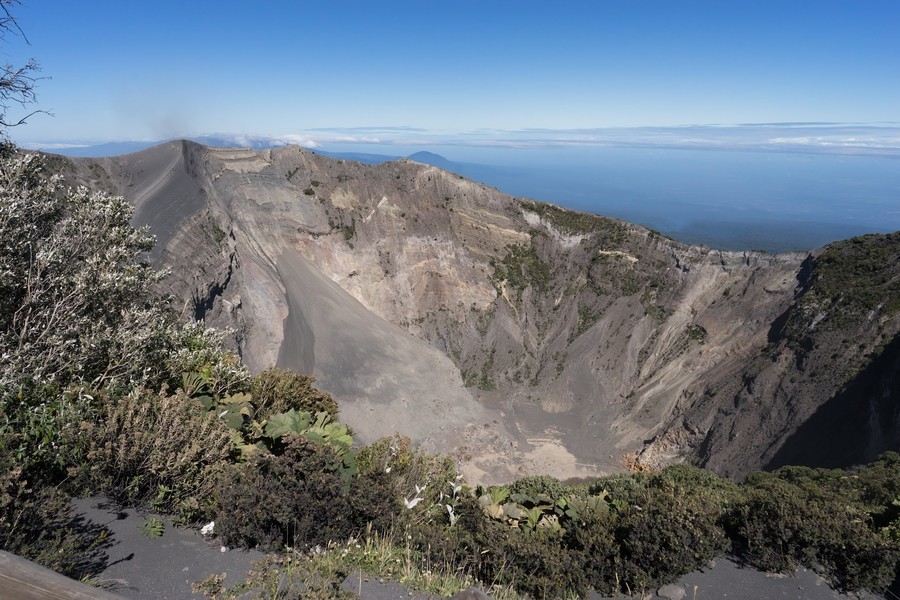
Viewpoint of the craters
Main Crater
The main crater (cráter principal) is absolutely massive—3,450 feet across and 980 feet deep. During the rainy season, you will see the famous emerald lake inside, which is even more impressive in real life than in any photo I’ve seen.
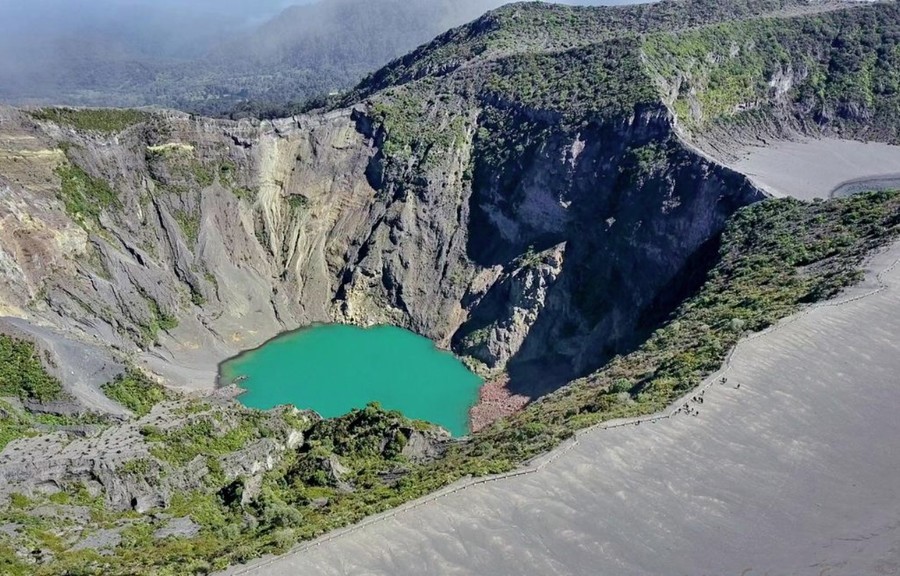
Main Crater
Diego de la Haya Crater
This smaller crater, at 2,260 feet in diameter and 330 feet deep, also fills with a turquoise lagoon during the rainy season.
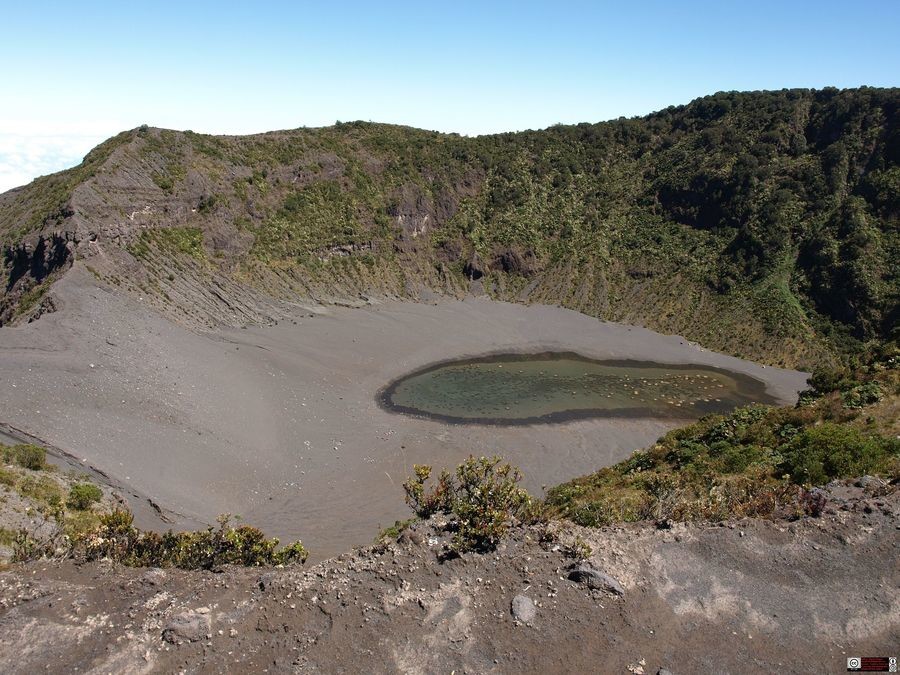
Diego de la Haya Crater
Playa Hermosa Crater
This is thee smallest of the craters and is covered in volcanic ash, allowing you to walk across its surface.
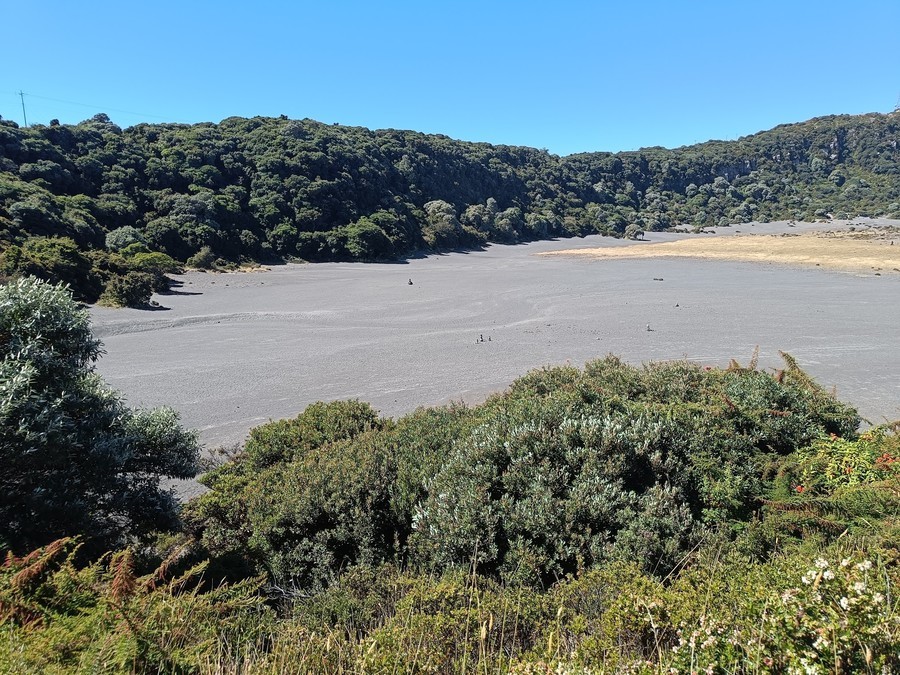
Hermosa Beach Crater
Prusia Sector
If you’re looking for a more immersive nature experience, I highly recommend visiting the Prussian Sector of Irazú Volcano (Sector Prusia). It’s much larger, with 10 miles of interconnected trails that wind through the lush forest surrounding the Irazú Volcano. If you’re lucky, you might even spot some of the most unique species of Costa Rican animals.
To reach this sector, you’ll need to drive up a steep road until you get to a fork. From there, you can choose between several hiking routes, depending on how much time and energy you have.
If you’re short on time, the shorter trails on the right are a great option. If you’ve got the time and energy, take a left at the fork for longer and more rewarding routes. I’ve added a map at the end of this guide with all the trails in the Prussian Sector, which should help you plan your visit.
The Grandfathers Trail (Sendero Los Abuelos)
This part of the park feels like stepping into a storybook. Tall pine trees line the trail, their tops stretching so high it’s almost dizzying. I couldn’t take my eyes off them, especially one that stood out—the “haunted tree.” It has this eerie, bare look that makes it hard to miss.
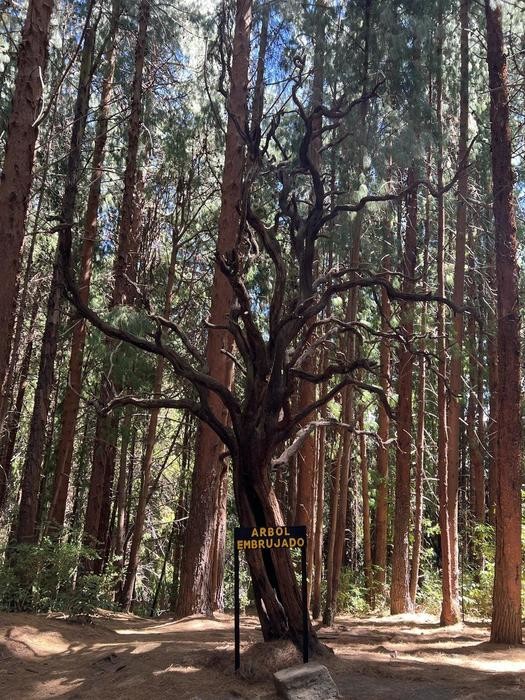
The Grandfathers Trail (Sendero Los Abuelos)
At the end of the trail, a small viewpoint opens up to a breathtaking valley below. When I was there, parts of the valley were veiled in clouds, giving the whole scene a magical, otherworldly vibe. It felt like I had walked straight into a fairy tale.
The Oak Trail (Sendero El Roble)
This trail picks up from the viewpoint, so you don’t need to backtrack to the parking lot. Instead, it cuts through another part of the forest and brings you to the edge of the pine woods. It’s a peaceful walk that gives you a different perspective of the forest.
Other trails
If you’ve got some extra time and energy, there are other trails worth exploring. The longest is Cerro Cabeza de Vaca, stretching 4 miles. It’s a bit of a commitment, but the reward is unbeatable views of Barva Volcano, one of the region’s iconic volcanic giants.
Irazú Volcano ticket prices and hours
The park is open from 8:00 a.m. to 4:00 p.m., but keep in mind that access to the Craters Sector closes at 2:00 p.m., and the Prussia Sector shuts at 1:00 p.m.
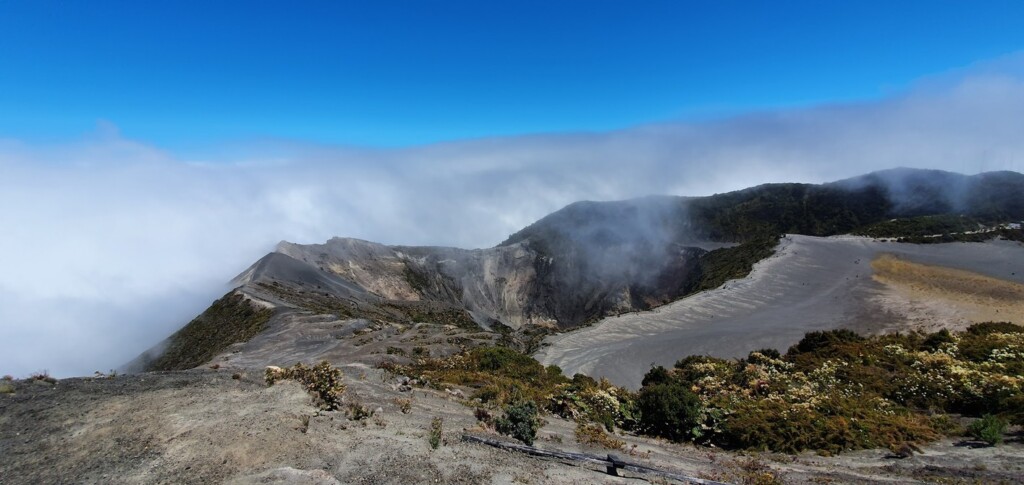
Irazú Volcano ticket prices and hours
The entrance fee to Irazú Volcano National Park is $15 for foreign visitors, and tickets can only be purchased online through the SINAC Costa Rica website. I recommend getting your tickets in advance since you’ll need to select a specific time slot for your visit.
Keep in mind that you can only enter the park during the time you’ve booked, so make sure to arrive on time. If you’re hoping to catch a glimpse of the craters on a clear day, I recommend booking early in the morning. However, if the weather is cloudy, there’s no guarantee you’ll get a refund or be allowed to enter at a later time.
Best things to do near the Irazú Volcano in Costa Rica
To make the most of your day, I highly recommend complementing your Irazú Volcano tour with a visit to other nearby attractions. Here are a few suggestions that helped me when planning my itinerary.
Visit the Turrialba Volcano
If you want to continue your volcano tour, the Turrialba Volcano is just 12.5 miles from Irazú. However, the winding roads can make the journey a bit tricky, and it’ll take about an hour to get there.
Before you head over, make sure to check the status of the park, as it’s still an active volcano and can be closed for safety reasons. It would be a shame to make the trip only to find it off-limits.
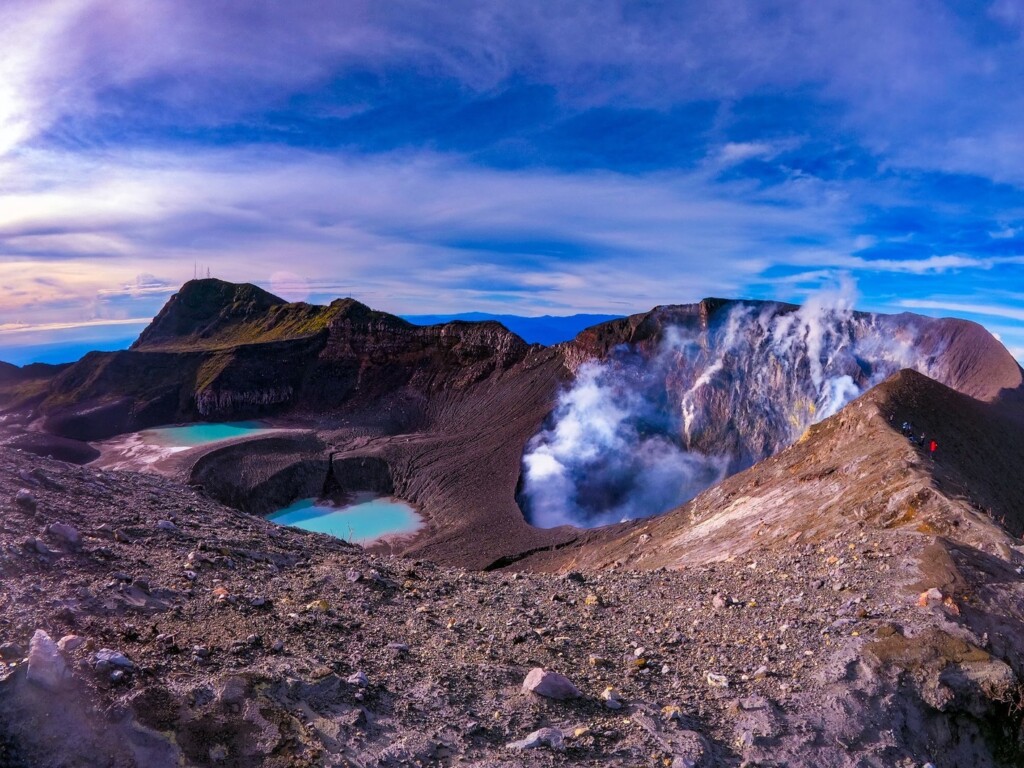
Turrialba Volcano
Visiting Turrialba is a more authentic experience since it’s not as touristy as other volcanoes. At the base of the volcano, you’ll find an almost untouched tropical forest teeming with wildlife. There are around 900 species of Costa Rican birds living in this area, making it a birdwatcher’s paradise. If you still have energy and a desire for adventure, there are several trails that lead up to the top, where you can get a close-up view of its three craters.
Check out Cartago
If you’re looking for something a little different, consider visiting Cartago, one of the most beautiful cities in Costa Rica. Located just an hour from Irazú Volcano National Park, it’s also conveniently along the way if you’re traveling from San José.
Cartago is rich in history and culture, offering plenty to explore. One of the most iconic landmarks in Cartago is the ruins of the Santiago Apóstol Parish, a Roman-style structure that has weathered numerous earthquakes over the years. It’s fascinating to see how life in the surrounding square flows seamlessly around its ancient columns.
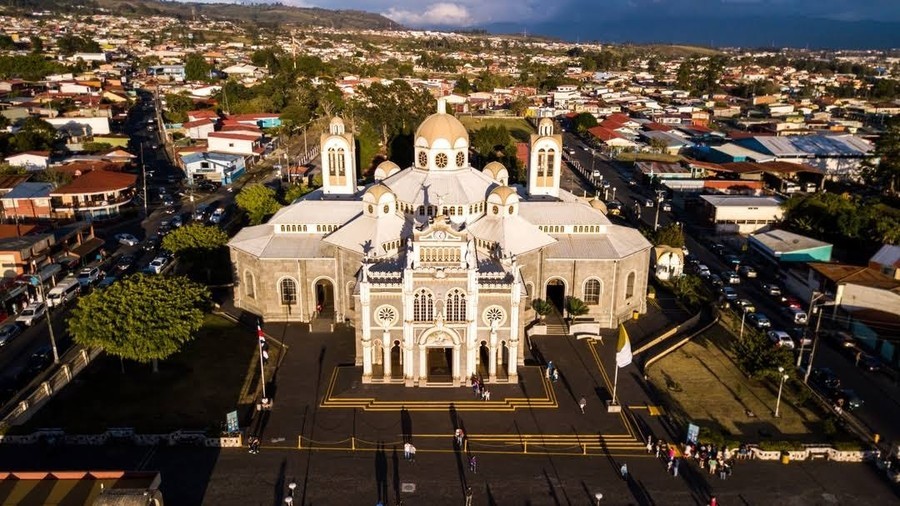
Cartago
Another must-see is the Basilica of Our Lady of the Angels (Basílica de Nuestra Señora de los Ángeles), one of the most important churches in all of Costa Rica. To visit this magnificent example of Costa Rican architecture, you’ll need to walk a bit further into the city center. If you’re lucky enough to be there on the first of August, you can witness the annual pilgrimage when thousands of people make their way to the church.
Cartago is also home to the Lankester Botanical Garden, which stands out for its unique Japanese-inspired design that you don’t often find in other places in Costa Rica. After a morning of exploration, the garden is a peaceful place to relax before heading back to your hotel in San José.
Go to the Guayabo National Monument
The Guayabo National Monument is an archaeological site dating back to the pre-Columbian era, located about an hour and a half from the Irazú Volcano. This site is not only stunning in its natural surroundings but also rich in history. This ancient settlement, inhabited from 1,000 BC to 1,400 AD, reveals centuries of culture through its aqueducts, plazas, and bridges.
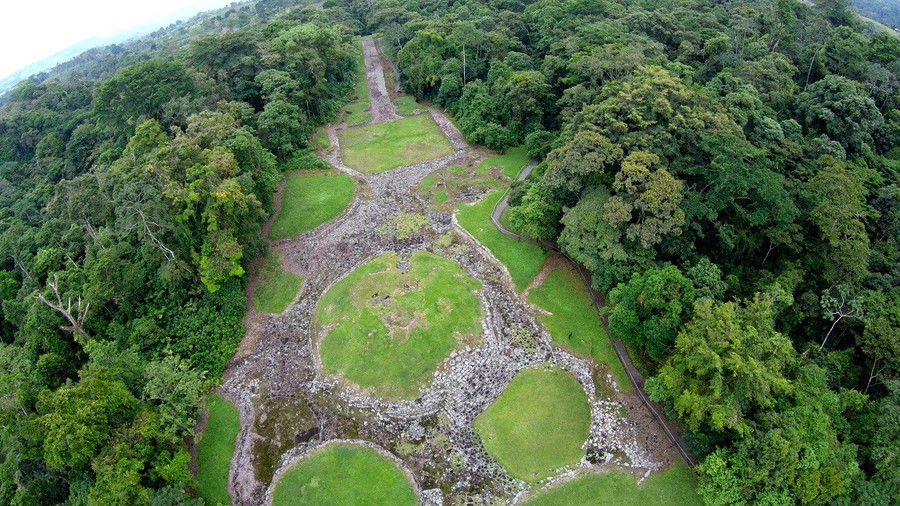
Guayabo National Monument
It’s a quick stop, as visitors are only allowed around 30 minutes to explore the site to help preserve the structures. The area also limits the number of visitors at any given time, so you won’t encounter large crowds. Be sure to go to the viewpoint, where you can look out over the ancient settlements and truly appreciate their scale.
Entrance to the site costs $6 for foreign visitors of all ages. It’s open from 8:00 a.m. to 3:30 p.m.
Visit the Orosi Valley
Just outside of Cartago lies the breathtaking Orosi Valley, a picturesque blend of lush green hills, majestic mountains, and coffee plantations that stretch as far as the eye can see. One of the highlights here is the Orosí viewpoint, offering stunning panoramic vistas of this magical valley.
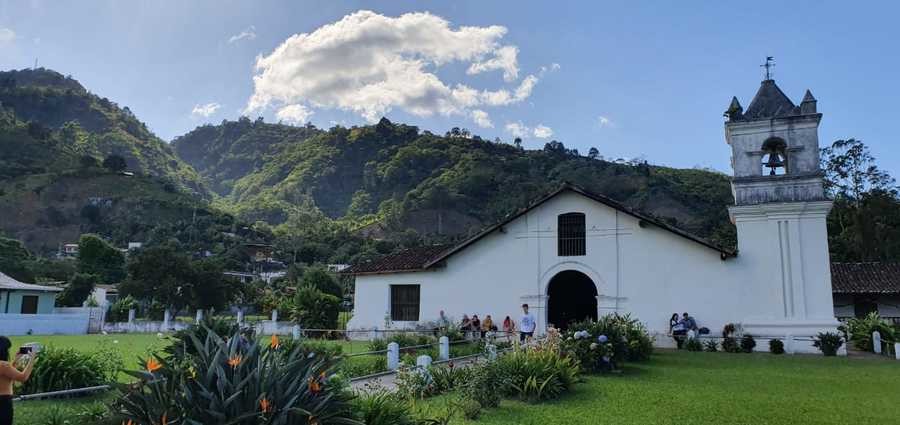
Orosi Valley
The charming town of Orosí is a must-see—it’s the heart of the valley and one of the most significant historical sites in Costa Rica. This is where the first Spanish settlement in the country was established, and you can visit the area’s first churches, nestled in the surrounding greenery. If you head toward Ujarrás, you’ll find the famous ruins of the Church of the Virgin of Rescue (Iglesia de la Virgen del Rescate).
For nature lovers, Tapantí National Park is a fantastic spot for hiking. In this protected area, you can explore diverse ecosystems, spot three different species of orchids, admire waterfalls and enjoy the lush forest surroundings.
How to get to Irazú Volcano National Park
Getting to Irazú Volcano National Park is relatively straightforward, as the roads are well-maintained and clearly marked. However, some sections are steep and narrow, so it’s important to drive cautiously.
If, like us, you’re planning to rent a car in Costa Rica, you can expect a lovely road trip. Picture yourself driving with your windows down, enjoying the breeze and your favorite music. The drive from San José to the park takes about two hours, but if you’re staying in Cartago, it’s only about an hour.
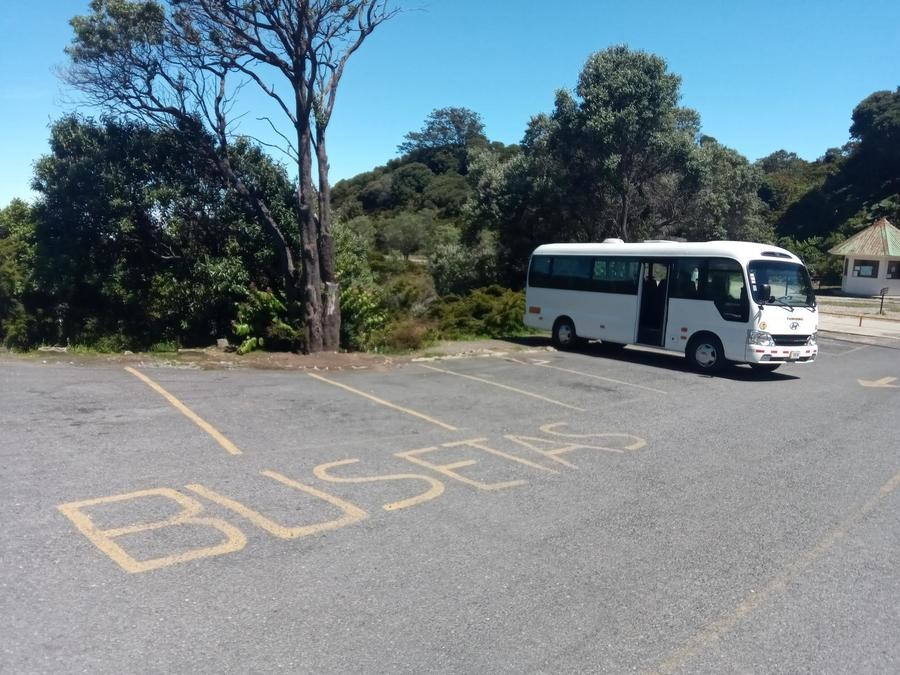
How to get to Irazú Volcano National Park
For those without a car, there’s a daily bus from downtown San José to the park’s entrance for $5. It departs at 8:00 a.m. at the corner of 3rd Street and 2nd Avenue, right in front of Hotel Costa Rica—here’s the location. For the return trip, the bus leaves the park at 12:00 p.m.
Irazú Volcano tours from San José
If you want to visit Irazú Volcano on a day tour from San José, there are plenty of options to choose from.
One of the biggest perks of joining a tour is having a professional guide with you. Not only will you explore the same areas you’d visit on your own, but you’ll also learn fun facts about Irazú Volcano and have the chance to ask questions along the way.
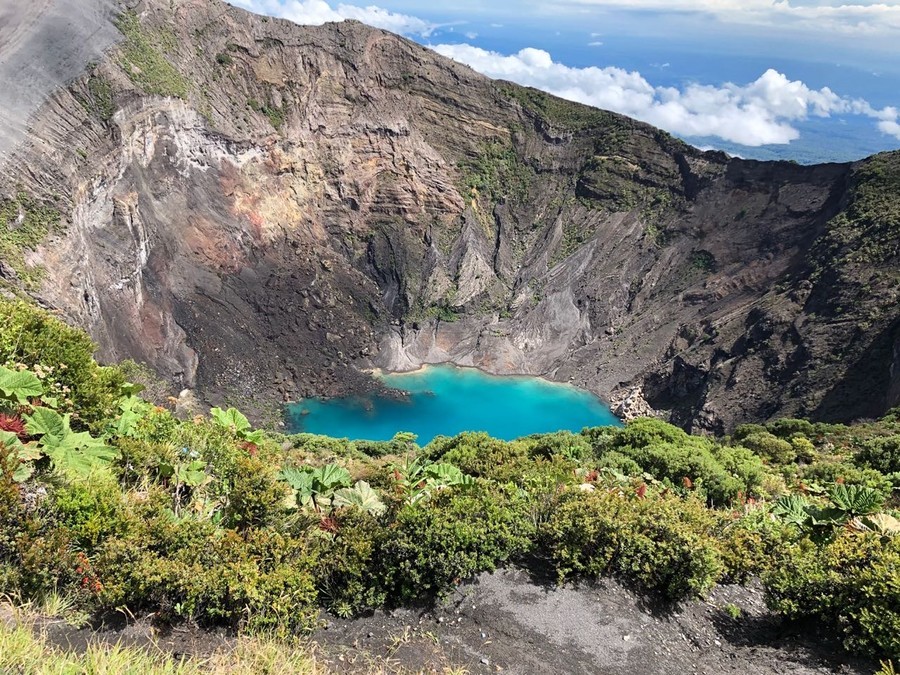
Irazú Volcano tours from San José
Plus, transportation is taken care of, so you can sit back, relax, and enjoy the ride. Some day tours to Irazú Volcano even combine multiple attractions into one day, making them perfect for those short on time or not keen on driving.
For example, this excursion covers the Irazú Volcano, Turrialba, and the Guayabo Archaeological Monument all in one trip. Alternatively, if you’d like to explore Cartago and the Orosí Valley in addition to the Irazú Volcano, I highly recommend this guided tour.
Map of Irazú Volcano, Costa Rica
Now that you’re familiar with all the activities and sights around Irazú Volcano, here are two maps that will come in handy during your visit.
The first map details the Craters Sector of Irazú Volcano National Park, highlighting all the routes and viewpoints:
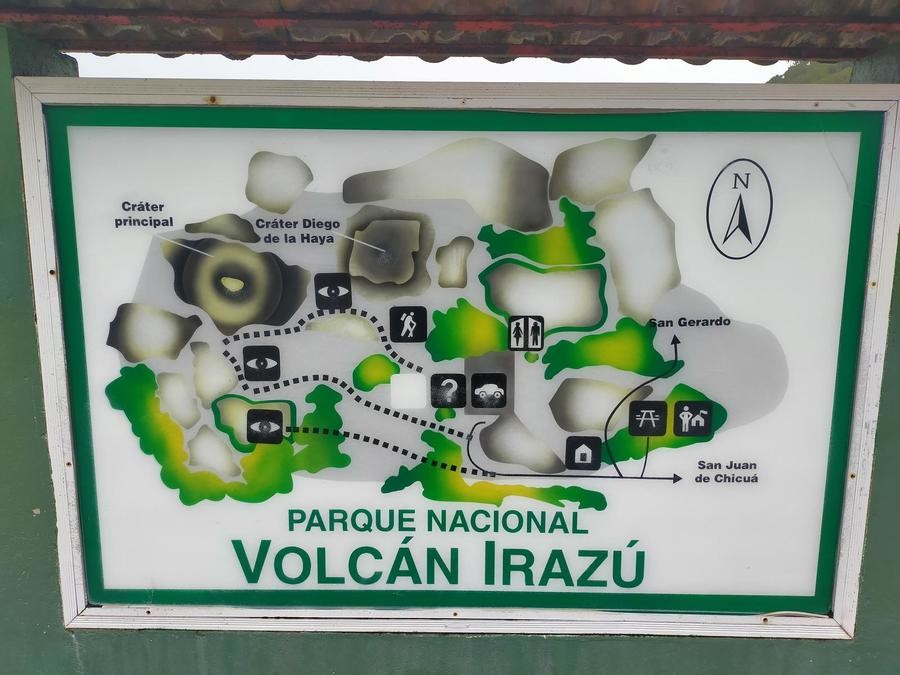
Map of the Craters Sector of Irazú Volcano National Park
The second map focuses on the Prussian Sector, where you can find all the stunning trails, including the location of the haunted tree:
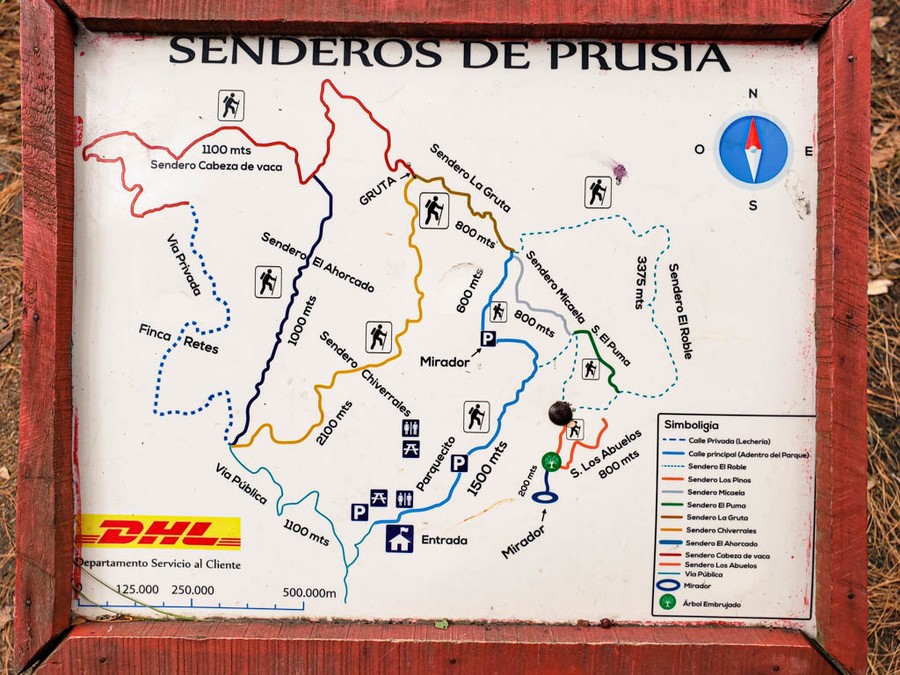
Map of the Prussian Sector at Irazu Volcano National Park
If you’re looking for more inspiration for your trip, you can also check out our map of Costa Rica to help plan your adventure.
FAQs – Irazú Volcano National Park
Now it’s time to answer the most frequently asked questions about Irazú Volcano National Park:
